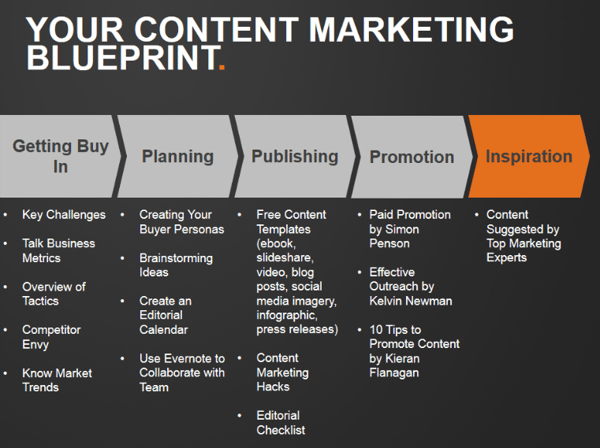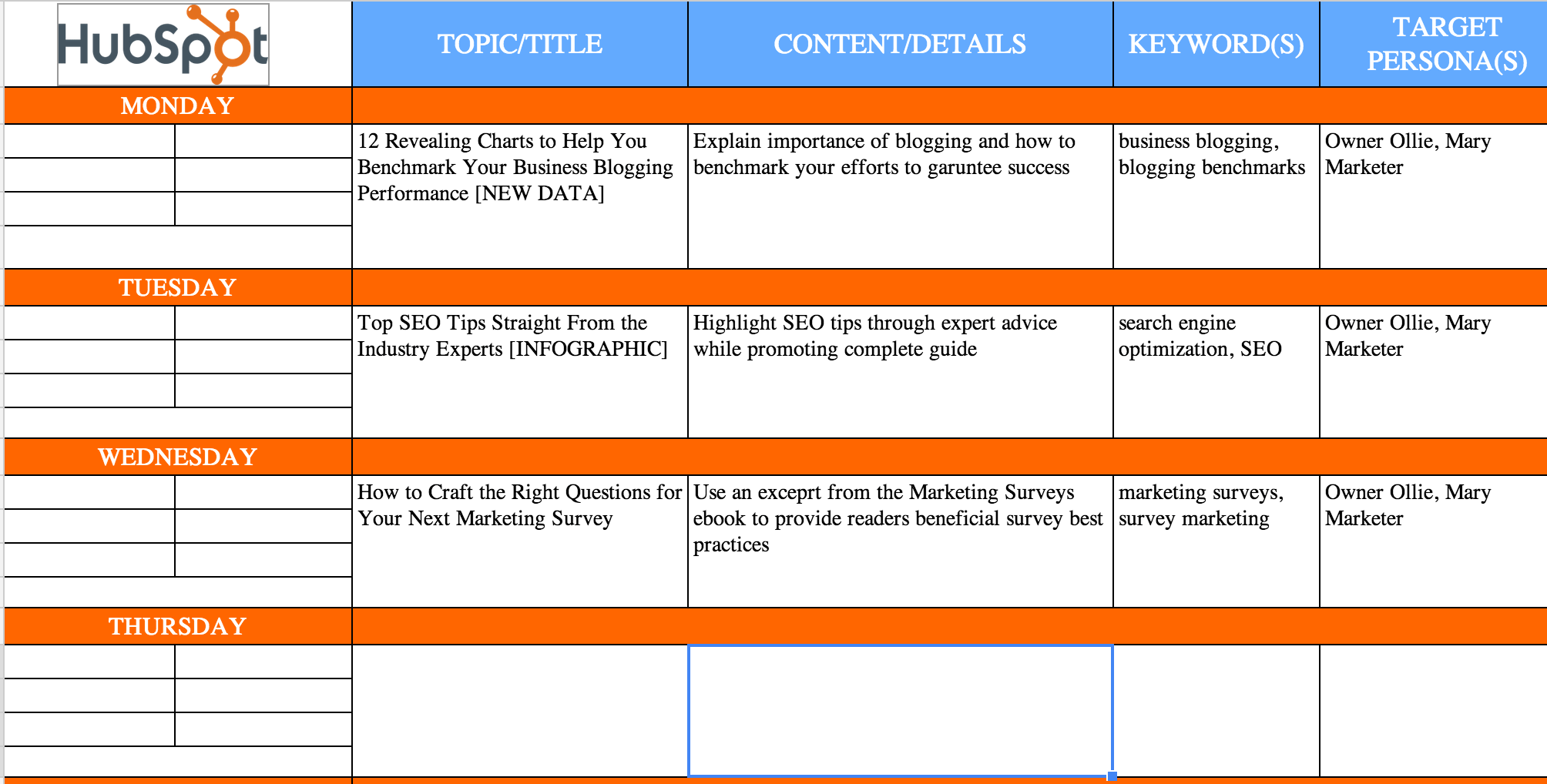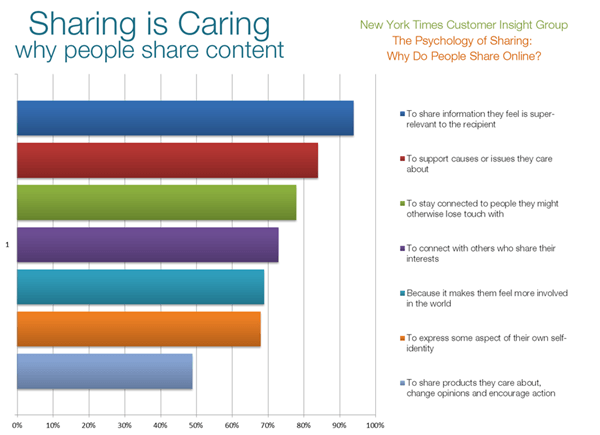
Authors Note: This is Part 1 of a four part series where we explore each stage of inbound marketing.
Attracting prospects is the first phase of an inbound marketing campaign. Businesses can get started by taking a multifaceted approach to reach out to users with different methods and on different platforms.
Writing blogs, creating and executing a content strategy, and establishing a presence on social media are the three most effective ways to attract prospects. In this article, we'll explain how you can get started with these practices and offer a few tips to help you manage the learning curve of the first phase of inbound marketing.
Blogging
Blogging is cheap, sustainable, and effective. According to HubSpot, "companies that published 16+ blog posts per month got almost 3.5X more traffic than companies that published 0-4 monthly posts."
Here's how you can get started with blogging to improve your site rankings and attract leads:
Set up a blog on your website
One reason blogging is so effective is because it brings users to your website. Once they're there, you can convert them to leads by directing them to a landing page.
Whether you're using HubSpot, WordPress, or a custom-made site, it's imperative that your set up your blog right on your website. This way, whenever you share your posts on social media or in emails, it takes users directly to your site.
Create long-form blogs
Blogging will only have a positive impact if your posts are thoughtful, substantial, and informative. You won't ever get good site rankings on Google if you just churn out superficial content on a weekly basis.
This Forbes article recommends sticking to long-form blogs to set the content quality bar high. According to the article, your goal should be to go in-depth and provide valuable content:
"Create the most valuable, in-depth, long-form blog/content piece on the topic and keyword. Over 1,800 words is "long-form," according to studies. One of the best ways to know you're creating the right content is by studying the top results in Google for your keyword, and then write better (more comprehensive, up-to-date, and valuable) content than what's there. If you can't, pick another keyword."
But just writing more words doesn't guarantee anything. Rather than merely setting an arbitrary word count, try stuffing as much value as you can into a long-form piece. Don't be afraid to edit out sub-par content. Quality is the goal here.
Content strategy
Attracting prospects via a content creation requires a cohesive strategy. Too many businesses post when they remember too, which leaves their campaign disjointed.

Create customer personas
The first step to creating a content strategy is identifying your audience. You need to consider who will consume your content, how they'll find it, and what will make them share it with their friends.
By creating detailed customer personas, you can have a more concrete idea of who you're writing for. Take your time on this step -- the more thought-through these personas are, the more impactful your content will be.
.png?width=600&height=375&name=buyer-persona-opcrm-example%20(1).png)
Create an editorial calendar
The best content campaigns adhere to editorial calendars. This helps businesses post consistently and mix up their topics and formats.
According to this Econsultancy article, businesses should also determine who will be responsible for each post:
"A calendar should naturally include content ideas and dates, however to generate the most success it should also include detailed information on responsibility (i.e. who creates and owns what) as well as details about distribution (i.e. where the content is published) and finally, what content perhaps needs to be updated or republished."
This accountability ensures that you and your colleagues will get the job done. Editorial calendars add much needed structure to a campaign.

Pick what analytics you'll follow
Trendy marketing analytics come and go, but we recommend that you focus on the most important ones. Be sure to follow your site's organic traffic, the sources of that traffic (social media, PPC, etc.), and the amount of time users spend on your site. Control for seasonality and you'll be able to see how well your campaign is performing.
Social media
Facebook, Instagram, Twitter, and LinkedIn are great sites for building brand awareness and interacting with prospects. With a systematic approach, you can convert your social media followers into leads.
Share content
The most important action you can take on social media is to share content. This gets you featured on a user's feed and if clicked, brings them to your website. Consider including this in your editorial calendar so you don't forget to share your blogs on social media.

Get users to comment on your posts
Social media comments are quickly becoming as important as the content itself. According to this HuffPost article, many users check the comments before clicking an article:
"Remember the last time you saw an engaging content, news article or ad on Facebook and Instagram. What was the first thing you did before actually clicking the link? You read all the comments first. Those comments are so powerful, that it can single handily convince you to click or don't click on that link. Based on how positive or negative the comments are. Same with buying online or offline, people use social proof to make important buying decisions."
Therefore, it's important to get users to comment on your posts. You can do this by writing engaging headlines and responding to comments personally. Over time, this will help you build a community around your content.
Buy ads to extend your reach
Social organic reach has been on the decline for years. These websites make their money through advertising revenue, so they encourage businesses to buy social ads to reach their audiences.
There's no sense in idealizing organic reach if you can't effectively contact prospective customers. Buying social ads can give your content more exposure and bring followers to your website. They're a great supplement to your regular posts.
Conclusion
Businesses have a few ways to attract prospects via an inbound marketing campaign. By writing blogs, adhering to a content strategy, and staying active on social media, they can reach out to different corners of their market segment.
Because these practices are inherently interdependent, it's important to approach them holistically. When they contribute to a greater goal, your campaign will be more coherent and engaging. For more information about inbound marketing, contact us today.














